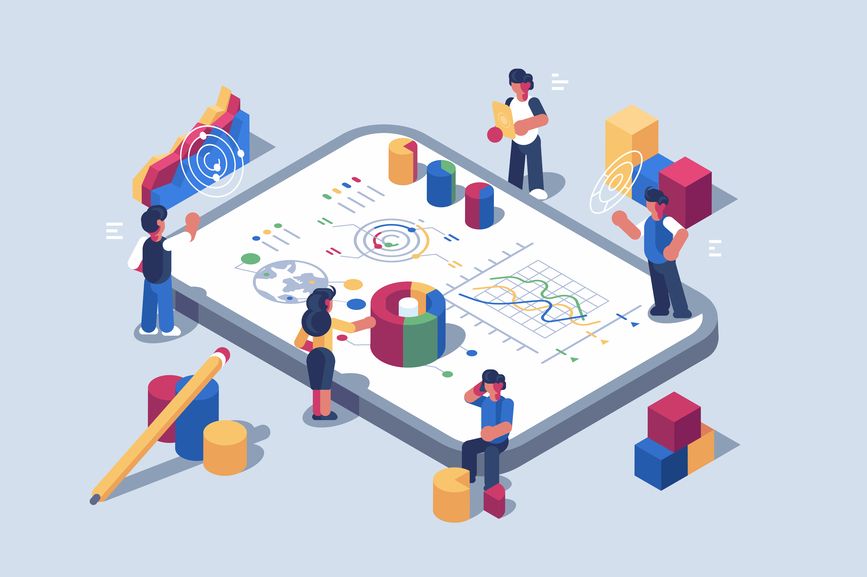How Big Data Helps To Fight Crime?

The Big Data revolution keeps on transforming various areas of life. Its influence has already reached far beyond business – we have discussed how Big Data in healthcare can save people’s lives and how Big Data is used in the world-class sports industry. Now it’s time to have a look on another significant application of Big Data technologies – crime prevention.
With the help of state-of-the-art analytics tools law enforcement agencies can identify criminals even before they commit a crime. Big Data crime analysis or crime analytics is a great aid in crime prevention and proactive investigation. However, it wouldn’t be so effective if it wasn’t for its users. Law enforcement officers are turning to Big Data crime analysis tools more and more and first positive results of algorithm-human cooperation has already been recorded. Let’s have a closer look on how Big Data helps people to fight crime.
Big Data crime analysis has been initiated by the Los Angeles Police Department in 2010. They discovered that incidence of crime has a similar course like aftershocks during earthquakes. Although it’s difficult to predict an earthquake, it’s much easier to forecast where its aftershocks will appear. Inventive LAPD officers fed the same mathematical model with crime data and created an algorithm capable of defining patterns in the occurrence of crimes. It appeared that whenever a crime had appeared somewhere, more crime is likely to be recorded in a nearby area, and the patterns of those criminal activities are similar to aftershock patterns.
Crime-prevention software
The most well-known predictive policing software PredPol has been developed and first used by Los Angeles and Santa Cruz police departments. The software can predict where crimes are likely to occur with 500 square feet precision. Data-powered officers can already boast some solid results – in LA, there’s been a 33% reduction in burglaries and 21% reduction in violent crimes in areas where the software was implemented. No wonder that other cities authorities have quickly became interested in the path-breaking new software. After PredPol has been applied by Atlanta Police Department, the city has seen an overall crime drop 19% and examples of other effective deployment proliferate. PredPol software is currently being trialed in over 150 cities across the US and it is likely to be rolled out in more cities.
Obviously, other major analytic tool developers such as IBM don’t fall behind. IBM is famous for being a major player in acquiring analytic start-ups and spending billions of dollars on predictive software. Few years ago they launched Coplink software that allows police departments across the US to mine one another’s databases to track down wanted persons. Even if somebody was booked for jaywalking in Arizona, policemen would be able to compare his personal data and identify him on the spot as the suspected murderer from North Dakota hundreds of miles away.
Discover crime patterns
Applications of Big Data crime analysis methods doesn’t end here. Advanced analytics is capable of identifying criminal patterns ranging from burglaries to murders or domestic violence. Police departments can now sift through vast amounts of information to identify specific lawbreakers. For example, officers can be ahead of a burglar whose previous crimes have already been recorded and predict his future actions, by means of analyzing his methods of entry, the time of the break-ins, the type of properties targeted, and the geographical distance from other burglaries. The information on a particular perpetrator can then be included in nation-wide records to study burglaries on a larger scale, helping police officers to identify patterns as to when and where break-ins are likely to occur next. With detailed information about crime patterns, law enforcement agencies can put more police officers on the street during high-risk situations. If they know, for example, that burglaries are likely to take place in specific districts in certain season and at certain hours, they can add more police officers in those places.
Big Data combats different types of crime
Other major group of criminals that can’t feel safe since Big Data has been leveraged to fight crime are sex abusers. Pedophiles create an international network that produces and shares a large amount of data and has long managed to stay fugitive. Thanks to new advancements of data analytics technologies, police investigators can search through gigabytes of data – images, videos, texts or HTML – to locate somebody who trades images of children.
Big Data analytics is also extremely effective in fighting financial crimes such as insurance frauds, insider trading, money laundering and healthcare fraud. Organized crime groups benefit from the fact that they create large amounts of data that has long remained impenetrable for law enforcement agencies. For example, criminals were able to extract money from bank accounts multiple times as they claimed money several times for the same, faked accident. Today, big data software brings together structured and unstructured data to analyze it for potential evidence of a crime. More importantly, it also delivers the evidence needed to effectively sue criminals who are involved in financial frauds.
With everything from store security cameras to past police reports to evidence from bystanders’ mobile phones, today’s law enforcement officials have an overwhelming amount of information that can help them solve crimes. All this information combined with data analytics tools and the right people to make sense of data and take quick action, constitute a perfect equation that can make offenders tremble with fear.

